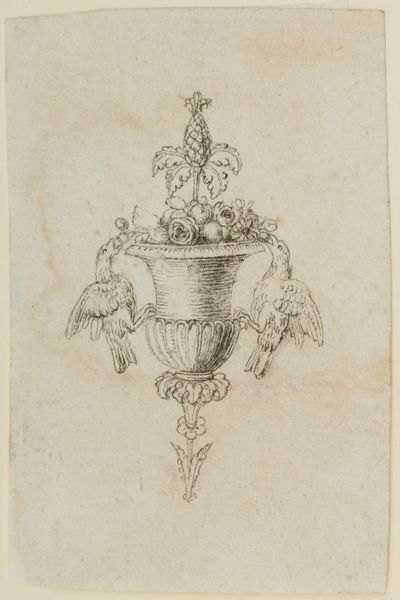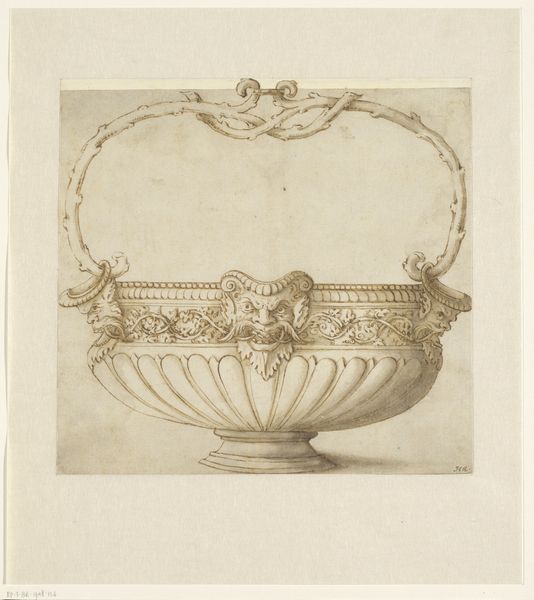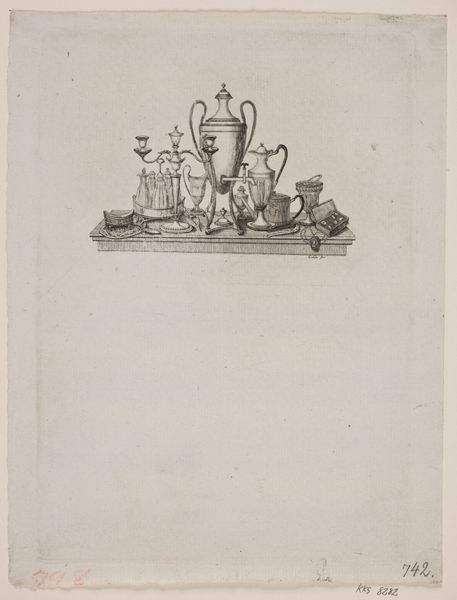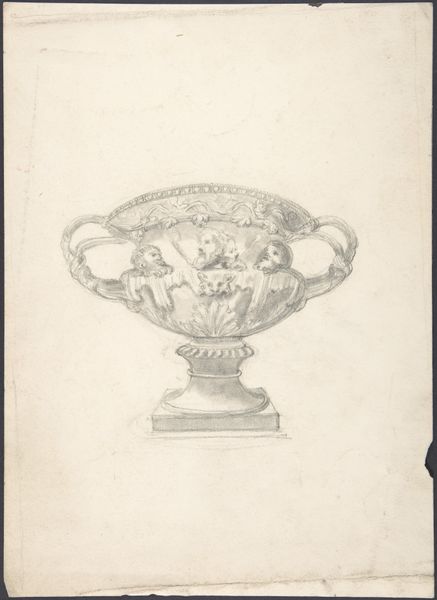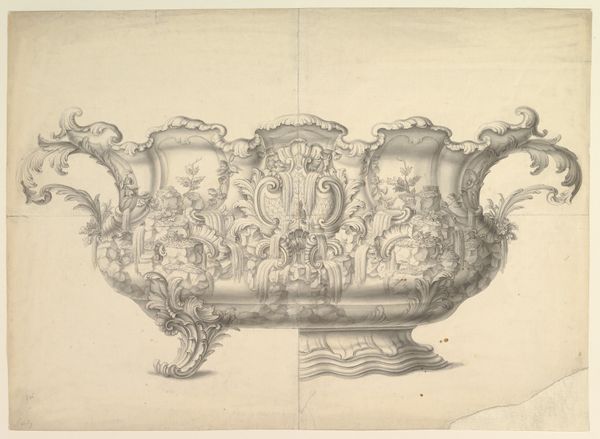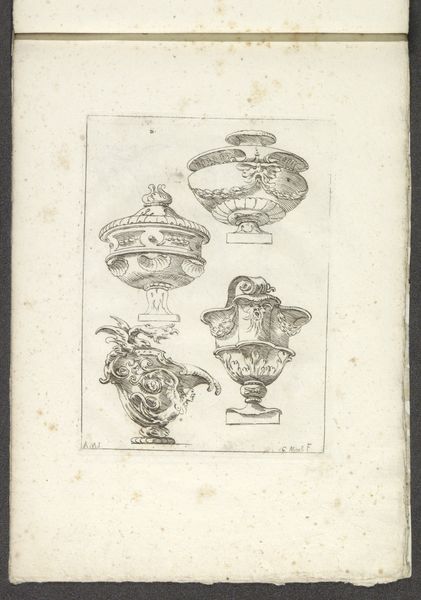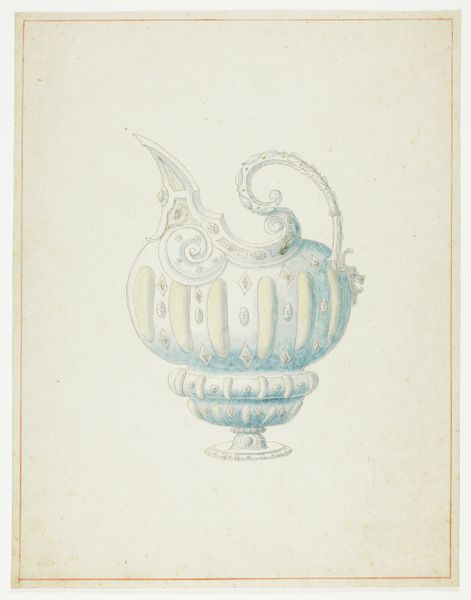
drawing, print, metal, bronze
#
drawing
# print
#
metal
#
bronze
#
11_renaissance
Dimensions: 16 1/2 x 11 1/4 in. (41.9 x 28.6 cm)
Copyright: Public Domain
Curator: Look at the finesse in this design, presumably for a bronze vessel. It’s credited to Erasmus Hornick and dates to sometime between 1496 and 1583. Editor: Immediately, I'm struck by its almost playful quality despite its intended grandeur. There’s something a little whimsical about the combination of classical figures and that crown-like rim. Curator: Whimsical, perhaps, but consider the political implications. These types of vessels often signified power and prestige. Hornick, a printmaker, understood the language of imagery and its potent role in reinforcing hierarchies. The drawing would have functioned as both an aesthetic object and a functional tool in constructing elite identity. Editor: I can't help but wonder about the women depicted at the vessel's corners; these women almost become part of the object. Does their incorporation perpetuate certain Renaissance ideals, subjugating female forms for aesthetic function? The vessel feels gendered through its overt ornamentalism, while power literally rests on their shoulders. Curator: That’s precisely the kind of question we need to ask! The artwork also prompts considering how metalwork in Renaissance Europe reflected social values, artistic ambition, and burgeoning trade routes. Bronze casting was an advanced technique, and such vessels could signify both wealth and technical prowess. They also functioned as visual tools. Editor: Tools that can perpetuate power structures. The elaborate details suggest that it would probably sit in someone's dining room during these formal banquets; that puts its inherent politics and purpose directly into focus, becoming inseparable from the diners around it. Curator: It’s important to acknowledge the role museums play in the reception of objects like these. Seeing it here, stripped of its original context, transforms it. What meaning might have been lost, or what new ones emerge when an object moves from a nobleman's table to a museum display? Editor: I’m left thinking about this design’s complicated beauty. I appreciate Hornick’s clear talents and vision, while also being conscious of how its role could have functioned within unequal structures. Curator: Indeed, contemplating objects like this enables us to examine both the historical artistry and its engagement within social realities.
Comments
No comments
Be the first to comment and join the conversation on the ultimate creative platform.
